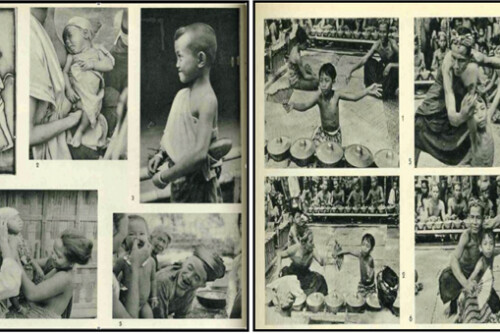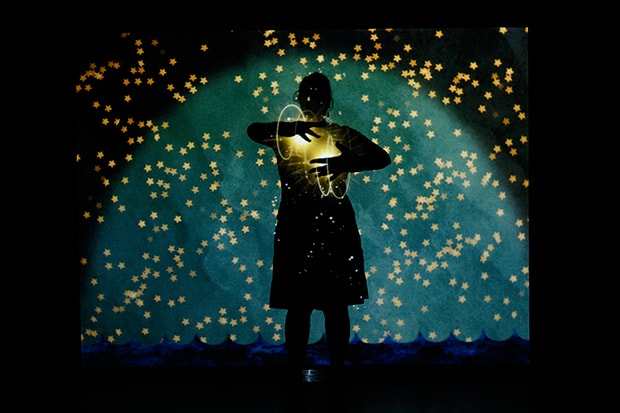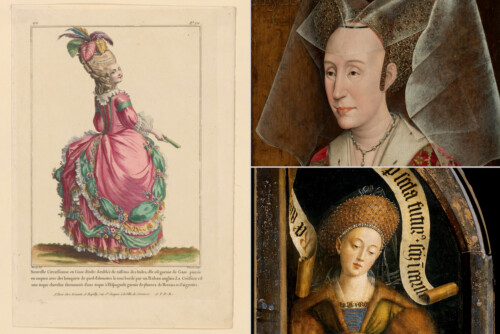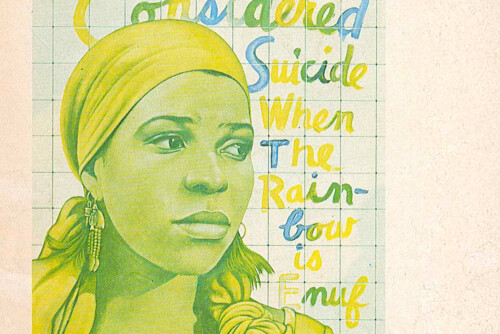Repetition
Now I want to clarify the conceptual architecture—e.g., what is actually meant by repetition? My interest is to try to think a logic at the base of neoliberal global capitalism, especially as in all the processes that are connected with the present crisis a fake concept of morality is involved. In such a situation, we are ready to accept, almost naturally, I would say, fake discourses of morality in which capitalism tries to cover up the outcome of the crisis (the financialization of capital) by stating that it was all just some sort of a mistake; as capital is noble; financialization, making money from money without investing in production, is just a single perversion, a mistake. But the Spanish theoretician Santiago López Petit states that if we think of globalization as the result of a process, we imply a development and a progression (also, temporarily, a regression, a crisis), and therefore, we are not capable of understanding the way capitalism functions. Capitalism, as elaborated by López Petit, is not an irreversible process but a reversible and conflictual event. The core of this reversibility is presented in the following way: López Petit states that in the world today, all is brought back to one single event, and this is not the crisis, but what he calls the “unrestrainment” of capital (in Spanish des(z)boc(ka)amiento), that can be more colloquially grasped as the “unrestraining,” or “unleashing” of capital.
That means that neoliberal global capitalism is nothing more than the repetition of this single event—that is, the unrestrainment of capital. Even more, this unrestrainment of capital creates a paradoxical spatialization that requires two repetitions working at once: on the one hand, a founding repetition in which a system of hierarchy is reestablished, leading to the constant reconstruction of a center and a periphery; and, on the other hand, a so-called de-foundational repetition that presents itself as the erosion of hierarchies, producing dispersion, multiplicity, and multi-reality. The unrestrainment of capital is the only event that—being repeated in any moment and any place—unifies the world and entangles everything that is going on within it.
I emphasize three major fields in which López Petit tackles global capitalism: reality, capital/power, and democracy. These segments are linked together through two almost old-fashioned mechanisms that are evidently still operative today: circularity, in the way of self-referentiality and empty formalism, on the one side; and tautology that produces obviousness on the other. Tautology means obviousness. This tautology, as argued by López Petit, presents itself today as the complete and total coincidence of capitalism and reality. To say that capitalism and reality totally coincide means that today reality is reality. This is precisely the result of the deadly obviousness of the tautological format (that capitalism and reality totally coincide), which our life is based on in neoliberal global capitalism.
The date of the event that made reality and capitalism totally coinciding is, as argued by López Petit, September 11, 2001. This is also the date that announced the entrance of global capitalism onto the main stage. López Petit states that the outcome of September 11, 2001 was the excess of reality; it was the moment when reality exploded. López Petit warns us that in the global era, the debate between modernity and postmodernity has become obsolete. The global era is a break with modernity and with the postmodern radicalizations of modernity that were developed by Giddens, Beck, Lash, etc. López Petit states that the classical concept of modernity is about modernization. It is presented as an endogenous process that is caused by factors within the system. Modernity is presented as the work of reason itself. Likewise, modernity constructs a rationalist image of the world that implicates the duality subject/object, and the distance is, says López Petit, that of man and the world. Postmodernism abolishes this distance and situates man inside a world that is made of signs and ahistorical languages. The global era oscillates this distance between zero and infinity. This is why we may feel the absence of the world and simultaneously witness its overabundance. So it comes as no surprise that most of the theoretical books that have been published recently deal with this oscillation between zero and infinity. The limit of the postmodern discourse resides in the contemplation of reality as neutral; that it has now come to political neutrality. But what is necessary to do today is to call for the repoliticization of reality, and to de-link ourselves from its political neutrality.
I will also claim that modernity continues to be important, as it allows us to rethink two emancipative projects that failed historically: the Enlightenment and communism. The failures are historically clear, on one side we have the brutal history of colonialism, and we have the Holocaust. Moreover we cannot start any talk on the matter without including in our critical stance the brutal history of colonialism and the many faces of contemporary coloniality. To be precise, colonialism is directly linked to Nazism and fascism. Contemporary epistemological coloniality reproduces only the Western matrix of the Enlightenment and does not take into consideration the epistemological breaks and shifts in the so-called “exterior,” or rather, as it is termed by the Eurocentric epistemological apparatus, the “edges” of Western European scientific thought.1 I insist on a continued analysis of knowledge/coloniality/modernity.
The other big project of modernism is communism, which has not been reflected well enough either, due to the past brutal failure of the “project” of Stalinism. The future of communism is paradoxical though, as it is today emptied of its historical context, in order to be presented as an infinite playground model of jouissance for emancipated Western intellectuals.
After this clarification we can enter the post-Cold-War European space, as only with the process of repetition—and not division, as in the time of the Cold War—is it today possible to understand the new processes of hegemony and discrimination that are implied in Europe. This repetition is also referring to Kwame Nimako (quoted in the beginning of this essay) when talking about the way in which Western Europe is to civilize (or better, “to teach”) the former Eastern Europe.
Post-Cold War and Gender Check
In this section, I attempt to show the ways in which representations of gender are central to the previously mentioned spatializations of Europe and to processes that govern mentality, classification, historicizations, and how this is linked to the processes of racialization that I emphasized in the third part. Therefore it is necessary to go back to the post-Cold-War time and the exhibition, Gender Check–Femininity and Masculinity in the Art of Eastern Europe.
First: The invitation to the exhibition did not mention a single name of any of the included artists. This is something that would not be possible if it were the case that Western artists were taking part in the show. One of the reasons for this omission, as stated by ERSTE, MUMOK, and the curator (each passing the “problem” on to the other) was that more than 200 artists were invited. As the producer of the show was the ERSTE Foundation, it is impossible to imagine that an extra sheet of paper could not have been provided as part of the invitation on which to list the names! Money was never a question in this exhibition, as the Erste Fundation, having tight relation with the Erste Bank, abundantly financed the project.
But what was even more disturbing was the fact that the press material did list a selection of names in a way. What I want to say is that the Eastern European artists, whose names were chosen from the total of some 200, were only presented or listed in the public (press) materials as a selection. The procedure was similar to the way that CVs have been written by artists themselves until now. Therefore, for ERSTE, MUMOK, and the curator, the selected artists’ names from the former Eastern European space were (are to be in the future) taken/included/excluded depending on the contexts for which the different institutions need their CVs.
What is described here is not a joke; it is banal evidence of the status of Eastern European artists (unfortunately, it is not about the eternity of work as it is the case with Western European artists), though this banality has its theoretical framework. One of the most challenging presentations—maybe the only challenging presentation at the symposium—was the lecture by Vjollca Krasniqi (a theoretician from Prishtina, Kosovo), organized immediately after the opening of the Gender Check exhibition. In her talk, entitled “Returning the Gaze: Gender and Power in Kosovo,” she presented a reading of the neocolonial capture of Kosovo by the European Union. Her analysis showed that the processes of discrimination—we could say structural racism—that present the imposed and endured racist measures that are currently implemented by the European Union onto Kosovo are all presented as being needed for the “emancipation” of Kosovars. Vjollca Krasniqi made a clear statement that the discrimination imposed onto Kosovo/Kosovars by the European Union is necessary (in the view of European Union) in order for Kosovars to become, as she stated, “mature political subjects,” ready to enter the future European Union. She clearly presented that “becoming mature” is only possible through changing Kosovo into a neoliberal capitalist protectorate, where maturity is practiced as the infantilization of the citizens of Kosovo through constant discrimination. Similarly, I can state that those few names mentioned of the selected Eastern European artists taking part in the Gender Check exhibition were selected on the presupposition that they were mature enough to be listed as part of the various CVs of different institutions (ERSTE, MUMOK, the curator), depending on the different purposes of those CVs.
More poignantly, I can state, quoting Goldie Osuri—and she refers to Arjun Appadurai’s text, “Number in the Colonial Imagination”—that the Gender Check exhibition can be conceptualized as a juncture of a colonial epistemology of constructing a certain space of visibility for the unnamed, let’s say 180 artists in the show (20 were named depending of the context), and of a necropolitical governmentality (if we think about the mathematics with which the exhibition was constructed).2 Appadurai talks of a specific way of constituting the colony (in contemporary times, such logic can be applied to Iraq, etc., which is the case in Osuri’s brilliant analysis of Iraqi necropolitics) with what he calls the concept of “enumerative community.” What do I want to say with this?
As it was repeated over and over, from the opening speeches on, it is true that Gender Check is not about Eastern and Western Europe (and therefore the word “East” is actually a mistake in the title of the exhibition), but is about establishing a colonial logic of producing “the former Eastern Europe” as an enumerative community of some 200 artists presenting more than some 400 works—and the curator argued that it could have been even more, but MUMOK was too small! The division between East and West is not at stake here, but what is at stake here is making the neoliberal capitalist logic of governmentality workable. Necropolitics is always established in the postcolony through a specific method of counting that allows for eternity as infinite statistics that evacuate the social, political, and conceptual space.
In Gender Check, some bodies—and let’s be precise, nameless bodies (the invitation that was sent to “everybody,” so to speak, did not list one single artist’s name, except perhaps the artist from the invitation’s cover image)—are taken to stand for other bodies because of the “enumerative principle of metonymy.” Even more, metaphor and metonymy were used as the logics by which to produce meaning throughout the exhibition, bypassing the social and political,3 where we do not have contexts about different positions in the exhibition, as in ordinary exhibitions nowadays in museums of contemporary art, but just some narratives that function in a metonymic way in order to present a certain old-fashioned metaphor (Ernesto Laclau is right, at least for once, as metonymy is at the base of the metaphor) of the East caught in binaries of private and public, etc.
Just to make a clear comment, as we are constructed as a “bag” of comments, the leaflet for the invitation to the symposium—which was constituted by positions coming from the East and the West—did contain names, and they were listed fully and accurately. It would not be possible to invite speakers from Austria or the “Former West” (as Western Europe like to call itself these days) and not have them listed! The enumerative logic implemented in the construction of the exhibition also comes close to logic of constituting protectorates and zones of control through “genderization.” I develop the concept in relation to Suvendrini Perera:4 genderization is a neoliberal, capitalist procedure of governmentality; applied through gender onto the whole territory of the East of Europe, after being successfully used on the much more mature terrain of the West of Europe. As argued by María Lugones in her text, “Heterosexualism and the Colonial / Modern Gender System,”5 gender itself is a colonial introduction, a violent introduction consistently and contemporarily used to destroy peoples, cosmologies, and communities as the building ground of the “civilized” West.
Therefore the term “genderization,” which at once resembles precarization and proletarization, presents not a gentle “gendering” process (similar to “becoming”); but a brutal, colonial logic of forced subjugation of the whole territory of former Eastern Europe to Western practices of gender that are transformed into a mechanism of control and normalization. Gender Check is a repetition of gender mainstreaming from Western Europe onto a territory that needs less subtle mechanisms of checking.
Second: It was repeated over and over again that the exhibition is not about Eastern and Western Europe, as they do not exist anymore. Although it must be clear that this is a paradoxical statement coming from the curator and those who provided the money, as well as many speakers on the panel; as the title of the show was Gender Check–Femininity and Masculinity in the Art of Eastern Europe. But still, it is true!
I pose a question though: What is the logic that organizes a possibility to declare that the borders are gone? I propose a thesis that the so-called imbalance between Eastern and Western Europe today is no longer a question of opposition as it was in the past, but that the Eastern and Western parts of Europe are today in a relation of repetition. It is the same repetition I put forward when speaking of global capitalism, when I stated that today, global capitalism is nothing more than the repetition of one event alone (according to López Petit), this being the unrestrainment of capital. However, this repetition does not go on as a process of mirroring, but it presents a repetition of one part within the other. We witness daily a repetition of the neoliberal, capitalist West amid the nationalist East, and they do not disturb, (so to speak) each other, but reinforce each other. Just think about the racist French politics deporting European Union citizens—the Roma citizens—“back” to Romania.
Another good example of this logic of repetition is the reusing of the word “former” from former Eastern Europe (that describes a precise geopolitical condition) for an empty performative—but fully ideological—move of de-re-framing what is functioning powerfully today as Western Europe. An excellent case of such a repetition is the project Former West that was started in the Netherlands as an international research, publishing, and exhibition project for the period of 2009 to 2012, curated by Charles Esche, Maria Hlavajova, and Kathrin Rhomberg. Former West is not at all a joke, although it could be seen as such, but is a perfect logic of repetition as the key logic of the global capitalism of today. What does the project do? It claims a perverse demand of equal redistribution of “responsibility” and “positions” between the East and West of Europe today. That is, it also answers specifically to the demand urgently imposed by Germany after the fall of the Berlin Wall that claimed that East Germany and West Germany were to become “equally” outdated. This is, of course, abundantly financially supported by the new European cultural and financial institutions.
In the case of Eastern Europe, the former means that the processes of evacuation, abstraction, and expropriation imposed by the West are actually “over;” as proclaimed by Germany in 2009, celebrating its twentieth anniversary of the fall of the Berlin Wall with the slogan, “Come, come in the country without borders” (and I will say without memory as well). But in the case of the “former” (as it should be at least written) West (Europe), it implies a purely performative, empty, speculative gesture. While the East is excluded more and more from the materiality of its history, knowledge, memory, etc., the West is just performing it. It plays with a speculative format of itself; it wants us to think that its roots of power and capital are fictional! But this is not a strange move today, as it comes in a time when we talk about financialization and the speculative turn in philosophy; the word former in front of West presents a speculative matrix that gives the West the possibility to not be conscious of its own historical and present hegemonic power—and therefore not responsible for it. Be sure that in the future we can expect projects, symposia, and statements in which the imperial colonizing forces—Britain, France, the Netherlands, not to forget Spain etc.—will try to prove how they were also colonized in the past, and that what is happening to them in the present is the result of strange forces that have nothing to do with the internal logic of capitalism itself, which has two drives only: making profit at any cost and privatization.
Or the now reborn former West, the old colonial power, wants to convince us that it is capable of a process of decolonization, but as stated by Achille Mbembe, without self-decolonizing itself. Similarly to financialization, this new decolonization is a “fictive decolonization.” As Mbembe explains, “fictive” decolonization is decolonization without contesting structural racism. The structures of exploitation, inequality, and racism stay in such a way untouched in the European Union—more accurately they are reinforced; the consequences are disastrous.
What should be included in the discussion between the former East and “former” West is precisely the ideological form of repetition. This form presents, encapsulates so to speak, a process of emptying (not only of diminishing, but in many cases completely nullifying, etc.), what at the level of content was made visible. On the other side, the former East and “former” West brilliantly describe the logic of the unrestrainment of capital that works by a paradoxical spatialization that requires two repetitions that have to work at once. Santiago López Petit states that on the one hand, we have a founding repetition with which a system of hierarchy is reestablished, leading to the constant reconstruction of a center and a periphery (the exhibition Gender Check!); and on the other hand, a so-called de-foundational repetition (the project Former West!) that presents itself as the erosion of hierarchies—producing dispersion, multiplicity, and multi-reality—and that makes invisible the always repeating production of the center and periphery. This de-foundational repetition is possible to name postmodern fascism, according to Santiago López Petit.
- I connect this criticism with the group modernity/coloniality, which is one of the most important research endeavors from Latin America (or in relation to it), and that includes members such as Aníbal Quijano, Ramón Grosfoguel, Walter Mignolo, Zulma Palermo, Catherina Walsh, Arturo Escobar, Sanjinés Javier, Enrique Dussel, Santiago Castro-Gómez, María Lugones, Nelson Maldonado-Torres, and Madina Tlostanova, among others. [↩]
- Arjun Appadurai, “Number in the Colonial Imagination,” Orientalism and the Postcolonial Predicament, eds. C. A. Breckenridge and P. V. D. Veer (Philadelphia: U of Pennsylvania P, 1993) 314–339. Cited in Goldie Osuri, “Identity and Complicity in Necropolitical Engagements: The Case of Iraq,” Reartikulacija 8 (December 2009). [↩]
- Appadurai 1993. [↩]
- See Suvendrini Perera, “Race, Terror, Sydney, December 2005,” borderlands 5.1 (2006). Quoted in Osuri 2009. [↩]
- María Lugones, “Heterosexualism and the Colonial / Modern Gender System,” Hypatia 22 (2007). [↩]






